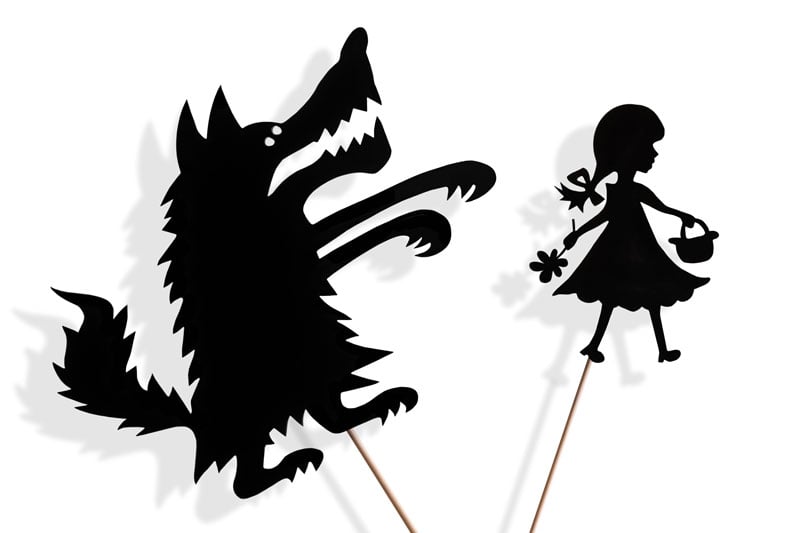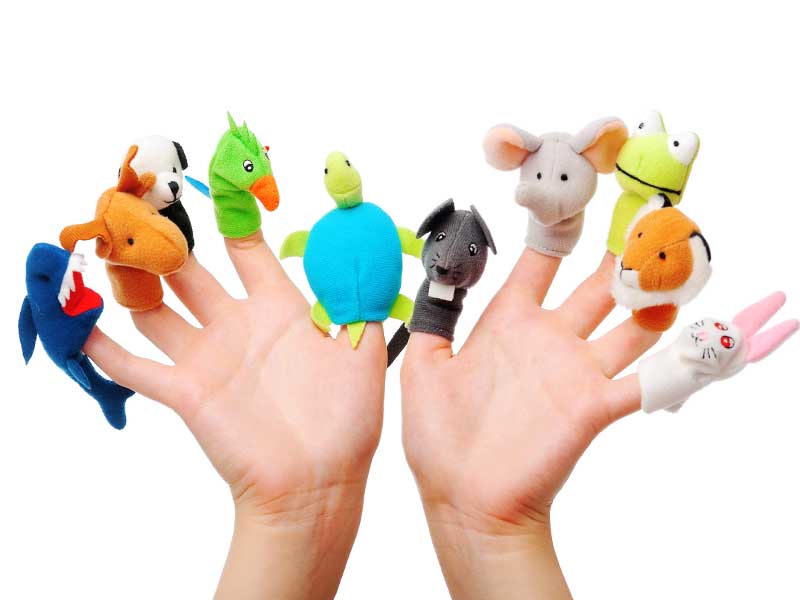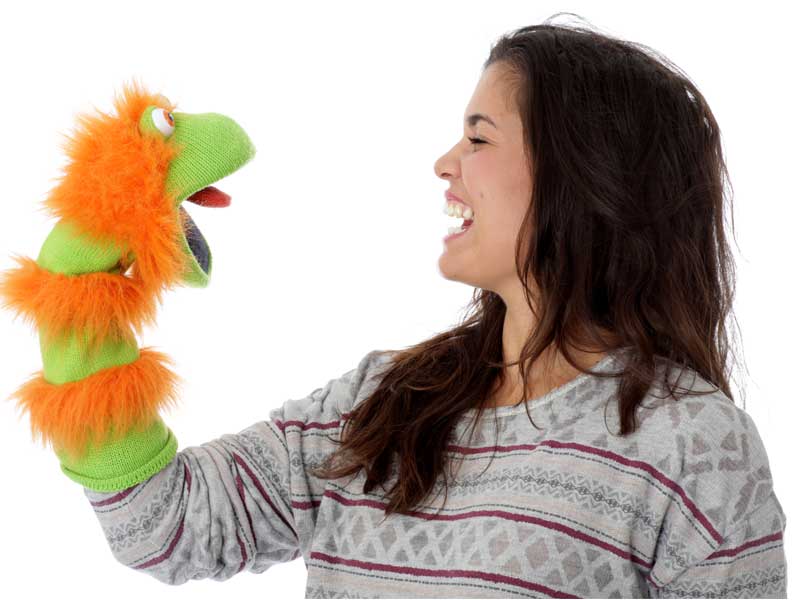

Making a puppet theater can be one of the most fascinating and enjoyable activities for children. Theaters need not be difficult to construct and examples range from a simple curtain to a sturdy and long-lasting wooden creation. Making puppets is an amusing task and the type of puppet dictates the form of the theater. Puppets can be simple, such as shadow or finger puppets, or more complex rod puppets or marionettes. Constructing props and scenery provides an outlet for creativity, using a variety of materials. Puppet theaters can help children to learn, develop motor skills, express emotions and communicate, as well as have fun.
Consider the size and shape of the theater in relation to the puppets being used. It is usually desirable to hide how the puppets work, and different puppets require varying amounts of space in which to move around. Play with a puppet first to see just how much room it needs.
It is possible to make a theater quite quickly by hanging a curtain across an open doorway, with a rectangle cut out to make an opening for the puppets. Add tie-back curtains at the sides of the opening. A simple cardboard box can be used for most types of theater. Cut an opening at the back, and one at the front for the stage.
For durability, reinforce the theater by covering it with strips of papier-mâché. Paint it when dry, and fix a strand of wire across the front to hold small curtains. Make vertical slits in the sides of the theater for inserting scenery. Alternatively, make a shadow puppet theater from a cardboard box. Cut a rectangular opening in the front, stretch white paper across it and glue or tape it in place.
Shadow puppets are easy to make, as they are 2D shapes which can be cut from thick construction paper. Attach drinking straws, fixed with glue or tape, to create operating handles, and make joints using holes and paper fasteners.

Finger puppets are popular and can be simple paper characters, with holes through which the child’s fingers protrude to form ‘legs’. Alternatively, a finger puppet could be a cone of paper, or two pieces of felt sized to fit around a finger and sewn or glued together. Wooden or plastic spoons make fine puppets; add felt clothing and wool hair, googly eyes, and craft foam features. Children can use the existing spoon handles to move the puppets.

Glove puppets can be made from gloves, socks, or sewn fabric. Make glove puppets more elaborate by adding arms, legs, or even a head, using different materials such as foam, fabric, cardboard tubes or papier-mâché. When the basic puppet is completed, add paint, craft foam, sequins, feathers and felt to create the finished character.

Making props and scenery encourages the imaginative and creative use of a wide range of materials. In a shadow theater, all of the scenery and props will be 2D cutouts, but props for 3D theaters can be created using cardboard, heavy construction paper, papier-mâché, existing toys, or even junk. Simple curtain scenery is easy to make, with details painted on to the material, or added by gluing or sewing on felt or other fabric shapes. Cardboard scenery can be painted and inserted through slits in the sides of a theater. It helps to attach handles of some kind, such as tongue depressors. Felt is a useful material for making both scenery and props, and Velcro can be used to attach things which need to be removed later in the performance.
As well as being an enjoyable activity involving play, puppet theaters offer children ways to express ideas and feelings, sometimes including difficult emotions. Using puppets involves communicating with others, which helps to develop social interaction skills and build confidence. Coordination, speech and listening skills can all improve through the use of puppetry. From an educational viewpoint, puppet play can be used to learn about literature or to convey information about important subjects. Creating and using a puppet theater makes use of problem-solving skills, and stimulates the imagination. Rehearsing involves observing, remembering, recreating and improving, all of which are useful for a child’s development.